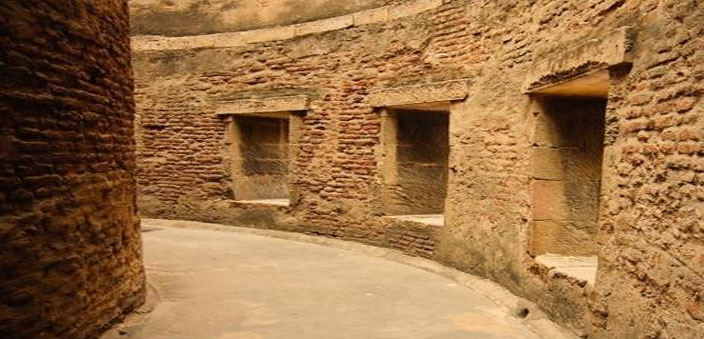Text : Gajanan Khergamker
Ahmedabad has been an important trading centre for centuries, albeit under changing rulers and dynasties. First came the industries, then the industrious entrepreneurship that helped Ahmedabad in creating a conducive and stable environment for trade and commerce. But, there is more to Ahmedabad: Its culture, architecture, history and legends form a unique and rich blend, and that is what lends the city its character. ‘Amdavad’, as the locals call their city, has something for everyone. The old city has beautifully blended in and accepted the newer ways of life, in its wake.
Muslim makers, Hindu buyers
For instance, till date, the peaceful Hindu-Muslim integration is visible in Sarkhej Roza. With the monsoons coming to an end and the humidity in the air finally easing out, Sarkhej Roza of Ahmedabad will, once again, be the destination for hundreds of Muslim potters who will move into karkhanas here to create pots for the next eight months for predominantly Hindu wholesalers.
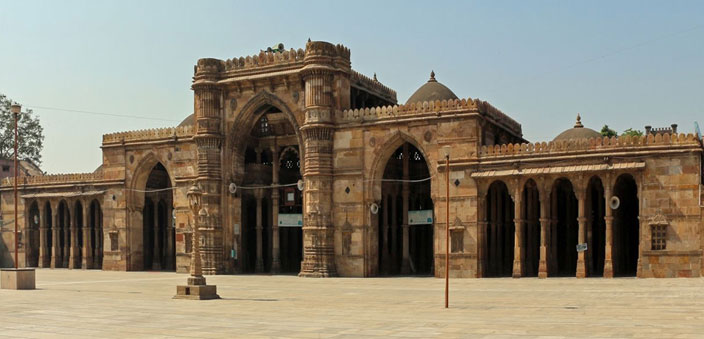
The Kumbharwada has around 25 homes of potter families living and working in tandem. Most of the potters are from North Gujarat – Mehsana or Patan. Their huts are covered with plastic sheets while unsold pots are placed in beautiful symmetrical patterns in rows and on top of each other, waiting to be sold in the wholesale market. The potters, Muslims, mostly belonging to the Sumra community, specialise in creating multi-hued pots to store water particularly during the summers.
Beating drought, the Adalaj way
The five-storied step well at Adalaj, close to Ahmedabad, bears testimony to the fact that the drought has been no stranger to Gujarat. The step-well was built in 1499 by a Muslim king Mohammed Begda for Queen Rani Roopba, wife of Veer Singh, the Vaghela chieftain, in an attempt to woo her, following her husband’s killing in war. The presence of this step-well, like many other historical structures also underlines the fact that Gujarat itself has been a victim of violence – a fact that most choose to downplay.
All talk of climate change, global warming and water conservation propagated by the ‘developed’ world apart, India and Pakistan together are home to Mohenjodaro, Harappa and Lothal with a string of wells, which is the predecessor of the step well. As many as 700 wells have been discovered in just one section of Mohenjodaro, leading scholars to believe that the ‘cylindrical brick-lined wells’ were invented by the people of the Indus Valley civilisation. Throughout history, the region which is now Ahmedabad, has played a crucial role. Lothal was one of the most important cities of ancient India during the Indus Valley civilisation, and happens to be the world’s earliest-known dock.
The city
To fully understand the uniqueness and the significance of Ahmedabad in India and her history, one has to visit the city. The city was settled around River Sabarmati and now has two distinct characteristic zones on the east and west of the river. East Ahmedabad boasts of older Ahmedabad, home to Pols (small settlements), Darwajas (city gates) and myriad other architectural marvels bearing testimony to the Hindu-Muslim cultural fusion.
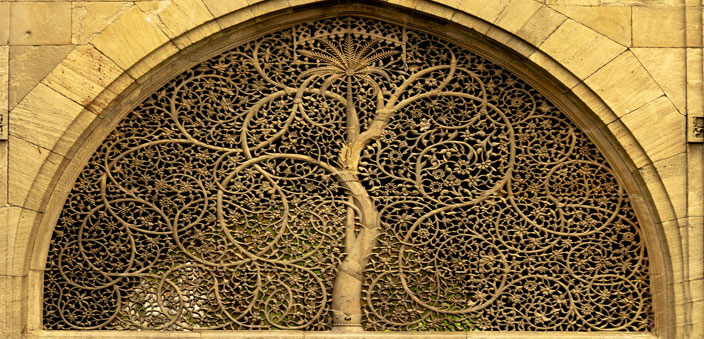
The city that has developed on the west of the river Sabarmati is more recent, bearing modern constructions and new-age developments. It is more of a planned city with extensive residential and commercial pockets.
Just by walking through the streets of Ahmedabad, you will see and feel the unison of Hindu, Jain and Islamic craftsmanship, and on a smaller scale, British architecture as well. The 15th century Bhadra Fort, the Jhulta Minar or swaying minaret, and the Sidi Saiyed mosque, one of the finest specimens of Indo-Saracenic style give us a taste of the city itself. Then there are the Town Hall, Akshardham Temple, Lal Darwaja, Amdavad ni Gufa, Kankaria Lake, etc.
Of little wonder then that prior to the visit of the Japanese Prime Minister (PM) Shinzo Abe to Ahmedabad, the Prime Minister’s Office (PMO) had written a letter to the Sunni Waqf Board, seeking information on the historical and architectural significance of Sidi Saiyed mosque so that the PM could narrate its grandeur. And, when PM Narendra Modi took the Japanese PM to the famous mosque, he described the significance of the 16th- century mosque – symbolic of Ahmedabad’s rich cultural history – to his Japanese counterpart. The jali of this mosque is also an icon for the city of Ahmedabad.
Slice of history
Possessing a landscape where the present blends seamlessly with history while boldly paving the way for the future, Ahmedabad’s mien stands unique, owing little to European domination. Established in the year 1411 AD by Sultan Ahmad Shah of Gujarat, Ahmedabad was a product of the Sultan’s ambitions to form a trading rival to the Hindu trade centre of Asaval. Later, Ahmedabad was taken over by the Mughals, the Marathas and the British.
Most Indian cities are, as a rule, compared to Western prototypes, but Ahmedabad is, to a huge extent, an exception: And, a proud one at that. From being one of the oldest trading points in India to becoming the focal point of the Indian freedom struggle under Mahatma Gandhi, and then becoming a model for sustainable development in modern India, Ahmedabad has now become the nation’s first World Heritage City.
Gufa – an architectural marvel
Among the more famous structures in Ahmedabad is the Amdavad ni Gufa – an underground art gallery. Designed by architect B.V. Doshi, the gallery represents a unique juxtaposition of architecture and art. The cave-like underground structure known as a gufa, in Gujarati, has a roof made of multiple interconnected domes, covered with a mosaic of tiles, while on the inside, irregular columns support the domes.
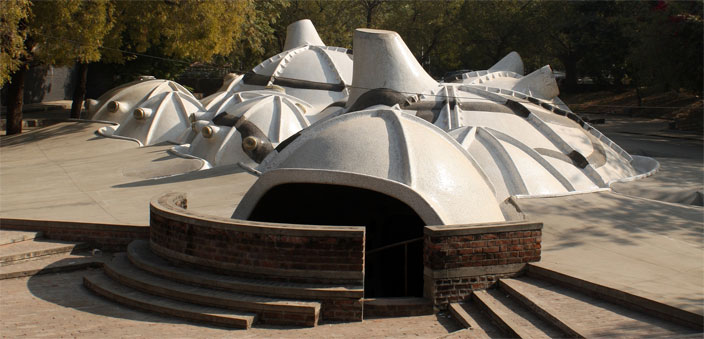
Pols – organic settlements
Popularly known as the Walled City owing to the myriad Darwazas that pepper the old city, Ahmedabad is known for ‘pols’ – cluster housing arrangements that comprises many families of a particular group linked by caste, religion or profession.
A pol would have a gated entrance and earmarked passages with a few ‘classified’ pathways known to the residents only. This is considered by most academicians as a vibrant evolution in urban living that permits the amalgamation of the old with the new. The houses in the pols are made of intrinsically carved woodworks with columns and fresco work done around walls or ceilings. The oldest pol in Ahmedabad is known as the ‘Mahurat Pol’ and built adjacent to Manek chowk. Most pols harbour small cottage industry units and house khakhra makers, book binders, toy makers and more, thereby lending a splash of colour to life there. Festivals like Navratri and Uttarayan are famous. Enthusiasts from across the world converge to Ahmedabad during this period to partake in the revelries.
The Bohemians
Speaking of inclusion, it would only be fair to give due credit to ‘Gulbai Tekra’ – a vibrant community zone in the midst of Ahmedabad, housing members of the Bawre community. The nomadic community members arrived in Ahmedabad a few generations earlier from Rajasthan, as they claim, and have retained their colourful mien in attire and attitude. It is, for this reason, that Gulbai Tekra is popularly known as Hollywood. The inmates of Gulbai Tekra aren’t any less filmy and the comparison is only fair, maintain locals!
Bridging the west and the east
Any description of Ahmedabad would be incomplete without mention of its bridges. It may be recalled that prior to the British period, people would cross the river on boats from areas like Shahpur, Usmanpura and Vadaj. When the waters would be low, they would wade across the river. And, it was only around 1869 -70 that a wooden bridge was built called Lakkadiyo Pul that was narrow, and could not be used by motorised transport.
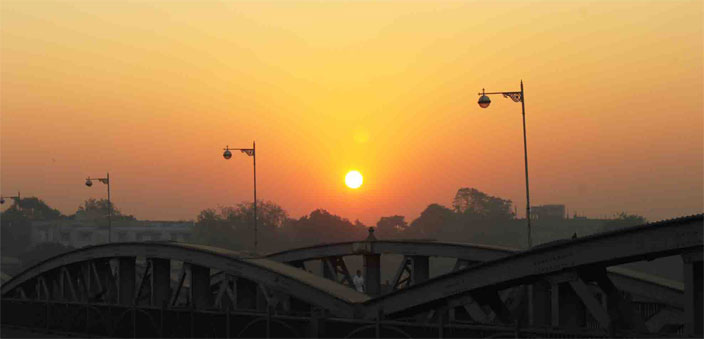
However, within five years of its construction, a flood led to the bridge being destroyed. It was then that a Gujarati engineer was appointed to build the bridge again. For building the bridge, a special type of iron was imported from Birmingham, UK. And, while ships carrying the iron cargo sank on two occasions, the third time around, the iron reached India and was used in the creation of Ellisbridge. It was said the bridge had enough iron to build three more bridges. And then, there were Gandhi Bridge, Subhash Bridge, Sardar Bridge, Nehru Bridge and Ambedkar Bridge, constructed over the years to join the west side of the city to the east.
Ahmedabad earns a place in history
Ahmedabad played an important role during the country’s fight against the British and post Independence, it has become an important educational hub harbouring some of the best academic institutes in the country. So, when in July 2017, Ahmedabad was declared a World Heritage City, the first in India, it was a moment of extreme pride and relief that Ahmedabad was given its due place in history. It was given this tag at the 41st session of UNESCO’s World Heritage Committee meet in Krakow, Poland. Close to 20 countries that included Turkey, Lebanon, Tunisia, Portugal, Peru, Kazakhstan, Vietnam, Finland, Azerbaijan, Jamaica, Zimbabwe, Tanzania, South Korea, Croatia, Angola, Cuba and, the host country of the UNESCO session, Poland, supported Ahmedabad’s nomination. India’s permanent representative at UNESCO, Ruchira Kamboj said the city has stood for ‘peace’ and ‘unity’ for over 600 years, while being one of the ‘finest examples of Indo-Islamic architecture and Hindu-Muslim art’.
What was interesting was the fact that in this moment of history, Ahmedabad outperformed Mumbai and Delhi – the other front-runners for this title. Ahmedabad has never been a major tourist attraction like Mumbai or Delhi. The references to the city are made generally for political, commercial or academic reasons. In 2013, the World Heritage Expert Committee established by the Ministry of Culture approved Delhi and Mumbai as final submission for UNESCO’s World Heritage status.
In between this clash of the titans for cultural supremacy, Ahmedabad was hardly in the picture. The Ahmedabad dossier faced several roadblocks even with the expert committee that felt the dossier was incomplete despite an ‘excellent’ documentation. With uncertainties about UNESCO’s acceptance of a third dossier, Ahmedabad’s dossier was left in lurch, to be decided by the Ministry of Culture.
The next turn of events, came as shock and surprise to the committee and everyone else involved. The government chose Ahmedabad, over Delhi and Mumbai, as its nomination for UNESCO’s World Heritage City category. “While Delhi’s proposal has been stuck with the Urban Development Ministry since last year, Mumbai’s proposal was not very strong. So we have decided to nominate Ahmedabad, which has a clear-cut proposal,” the Culture Minister Mahesh Sharma said.
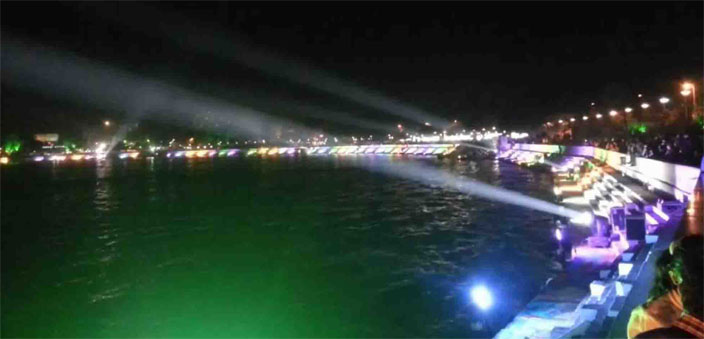
Both Delhi and Mumbai had executed strategic PR campaigns but several factors led to turning down of proposals of the two mega cities. In hindsight, development and consequent restrictions on the same were the major reason why Delhi and Mumbai were left out. Once a city is given the status of a heritage city, several restrictions are imposed on development, redevelopment and affiliated activities.
Both Mumbai and Delhi could not have afforded that, which is why Ahmedabad was chosen and the city had substantial heritage on ground to speak for itself.
There are more than 250 world heritage cities in the world and India did not have even one, till now, despite being home to some of the world’s oldest civilisations and cultures. The critical factor being that India could not have afforded to curb developmental demands in its ‘heritage rich’ cities.
And also, to think of it, very few cities in India would have a heritage as rich and varied as Ahmedabad.
Gajanan Khergamker is the chief editor of DraftCraft – a media-legal firm that tackles offbeat issues and subjects the mainstream media tend to overlook for want of space and initiative.

